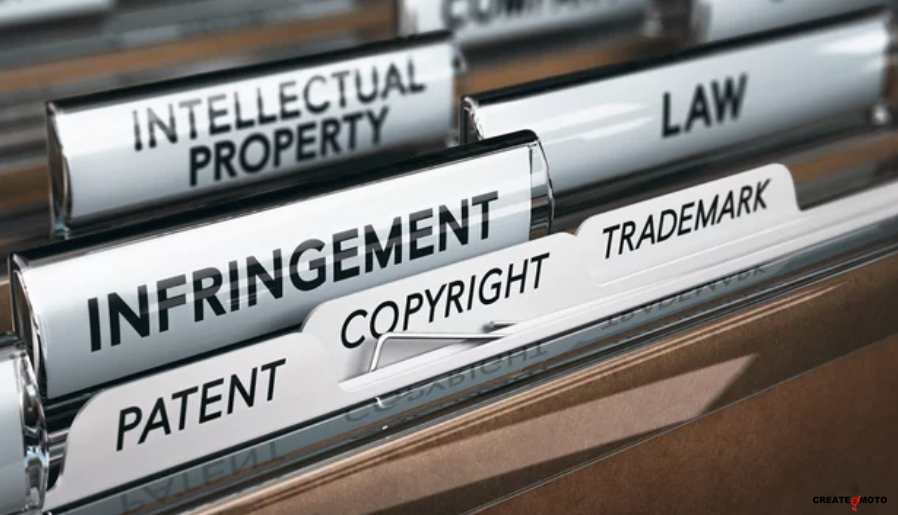
In a world where creative ideas drive innovation, protecting your intellectual property (IP) has never been more important. Whether you’re a designer, an entrepreneur, or a writer, your unique creations are at the core of your business. But as we share our work online, the risk of theft or misuse increases dramatically. So, how can you safeguard your work and ensure that your intellectual property remains yours?
What Is Intellectual Property?
Intellectual property refers to the creations of the mind, such as inventions, literary and artistic works, designs, symbols, names, and images used in commerce. It’s a broad category that includes:
- Trademarks – Protect logos, brand names, and slogans.
- Patents – Secure the rights to inventions and industrial designs.
- Copyrights – Cover artistic, literary, and musical works.
- Trade Secrets – Protect confidential business information like formulas, strategies, or processes.
These legal tools give you control over how your work is used and allow you to benefit financially from your creations. Without IP protection, anyone could take your idea, product, or design and use it as their own.
Why Protect Your Intellectual Property?
The value of intellectual property cannot be overstated, especially in an age where information is shared globally in seconds. According to the World Intellectual Property Organization (WIPO), IP is essential for stimulating innovation and creativity while enabling creators to share in the financial benefits of their work. Failing to protect your intellectual property can lead to lost revenue, brand dilution, and even the complete undermining of your business.
For example, if you develop a unique software application, without a patent, competitors could replicate your software, offering a nearly identical product at a lower price. This would undermine your market share and harm your business. Similarly, failing to trademark your brand name could allow others to misuse it, confusing consumers and diluting your brand value.
The Different Types of IP Protection
Trademarks: Your Brand’s Identity
A trademark is a powerful way to distinguish your business from the competition. It represents your brand’s identity, including your name, logo, and slogan. Registering a trademark prevents others from using something similar in a way that could confuse customers. Brands like Nike, Coca-Cola, and Google have trademarks that are instantly recognizable and help them maintain their competitive edge.
To protect your trademark, you’ll need to register it with the relevant authorities in your country, such as the U.S. Patent and Trademark Office (USPTO) or the European Union Intellectual Property Office (EUIPO). Keep in mind that trademarks need to be renewed periodically, and you should enforce them by taking legal action if necessary.
Copyrights: Protecting Creativity
Copyright protects original works of authorship, including books, music, films, and artwork. For instance, if you’re a photographer or a writer, copyright ensures that your work isn’t copied, distributed, or publicly displayed without your permission.
In many countries, copyright protection is automatic upon the creation of a work. However, registering your copyright provides additional legal protection, especially if you need to sue for infringement. One of the most famous copyright cases involved the song “Blurred Lines” by Robin Thicke, which was found to infringe on Marvin Gaye’s copyrighted song “Got to Give It Up.”
Patents: Guarding Innovation
If you’ve invented a new product, technology, or process, obtaining a patent is crucial. A patent grants you exclusive rights to your invention, allowing you to prevent others from making, using, or selling your invention without your consent. Patents typically last for 20 years, and they are critical for industries like pharmaceuticals, where significant research and development costs are involved.
However, the process of securing a patent can be lengthy and costly. It’s important to conduct a thorough patent search to ensure that your invention is novel before applying for patent protection.
How to Protect Your Intellectual Property Online
Watermarking Digital Content
One of the simplest ways to protect your digital content—whether it’s images, videos, or documents—is to watermark it. Watermarking places a visible or invisible mark on your work, deterring theft or unauthorized use.
Platforms like Adobe Photoshop offer built-in watermarking tools that allow creators to stamp their name or logo on their work. However, keep in mind that watermarks can be removed by someone with enough technical expertise, so it’s not a foolproof method.
Licensing Agreements
Licensing your intellectual property can allow others to use your creations legally while you retain control and earn royalties. Whether it’s a song, a book, or a software program, you can license your work for a fee, giving users permission to use it under specific conditions.
One famous example is how major software companies license their products to users through end-user license agreements (EULAs). A well-crafted license agreement ensures that your IP is used as intended, with legal consequences for violations.
Monitoring for Infringement
It’s not enough to register your IP and hope for the best. You need to actively monitor the marketplace and the internet for potential infringement. Tools like Google Alerts can help you track when your brand name or product is mentioned online. Similarly, companies like DMCA.com offer monitoring and takedown services, helping you combat copyright violations across websites and social media platforms.
If you discover unauthorized use of your intellectual property, sending a cease-and-desist letter is often the first step in resolving the issue. Legal action may be required if the infringement continues.
International Protection for Your IP
In our increasingly globalized economy, your intellectual property might need protection beyond your home country. International treaties like the Paris Convention and the Berne Convention help protect trademarks and copyrights across multiple countries, making it easier for businesses to protect their IP on a global scale. Filing for international protection can be complex and expensive, but it’s essential for businesses that operate in multiple markets.



0 Comments